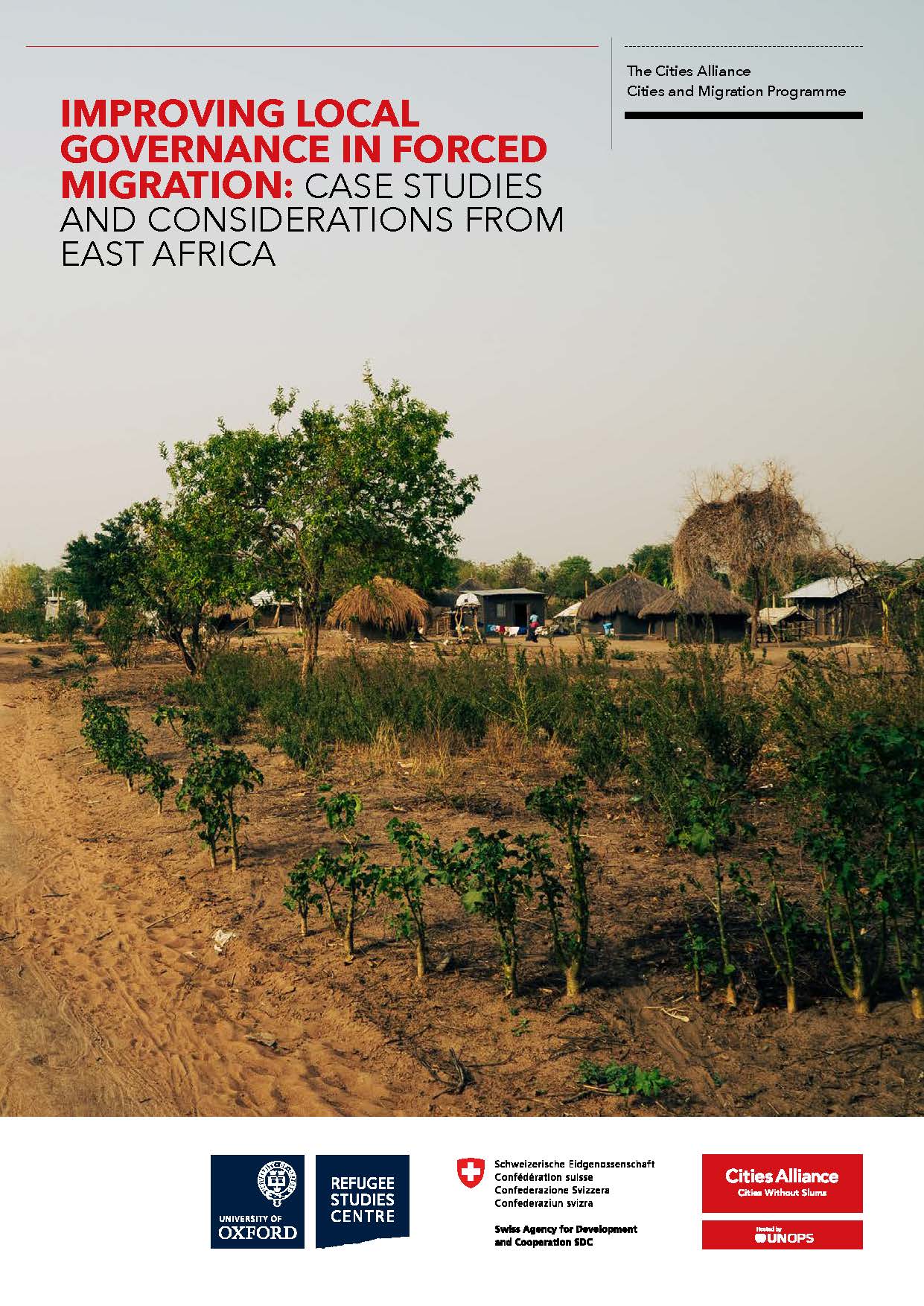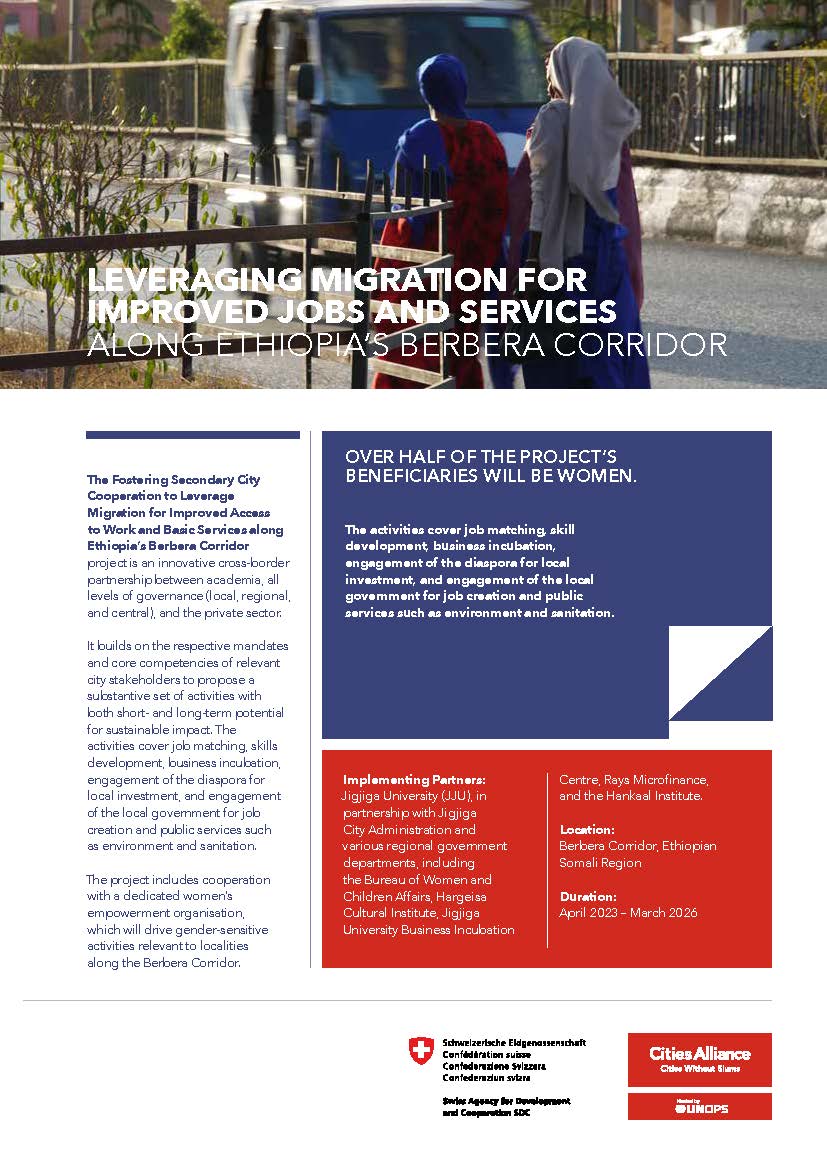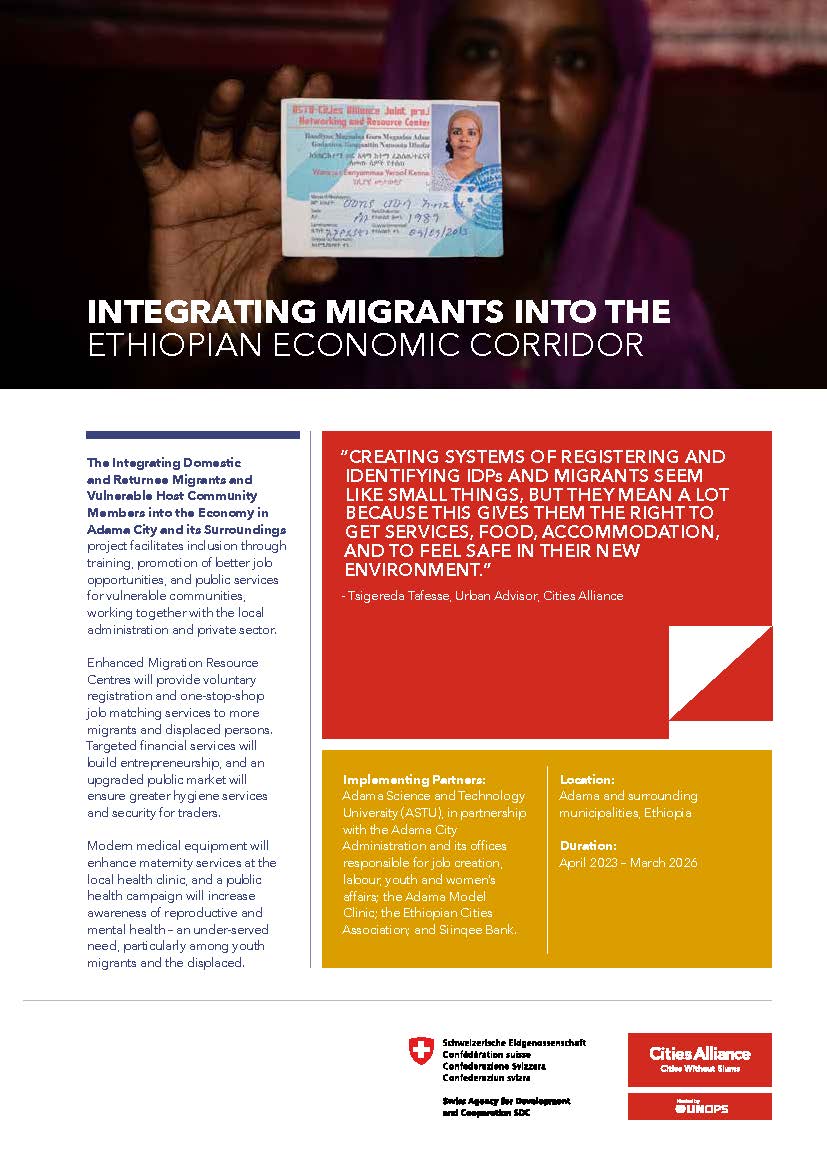- Who We Are
- How We Work
- Regional / Country Initiatives
- Legacy
- Core Themes
- Working Groups
- Portfolio & Results
- Newsroom
- Resources
Improving Local Governance in Forced Migration

Improving Local Governance in Forced Migration: Case Studies and Considerations from East Africa is a research report prepared for the Cities Alliance Cities and Migration Programme in cooperation with the Refugee Studies Centre, University of Oxford, with funding from the Swiss Agency for Development and Cooperation.

Ethiopia, Kenya, and Uganda each sit on a different part of the spectrum of responses to refugees and IDPs. Uganda has a more open-door and unrestrictive policy towards refugees, although this becomes more nebulous in regard to urban areas.
Ethiopia also has an open-door policy, and the country has been shifting to an unrestrictive approach and expanding the ‘out-of-camp’ policy, albeit with mixed implementation.
In contrast, Kenya has a restrictive (encampment) approach towards refugees, with the government denying refugees the right to work and limiting their movements outside of camps.
All three countries have a decentralised system and power is devolved; however, they all follow different government structures.
Improving Local Governance in Forced Migration examines these contexts of local governance and responses to forced displacement, and identifies several key findings:
- Reliable data on urban refugees is lacking. All three countries lack reliable data on the number of refugees living in urban areas. Most data available shows refugees living in rural areas and settlement camps. Resources and information on urban refugees are very limited, which impedes the ability of local municipalities to support forcibly displaced people and ensure adequate resources for all their inhabitants. In each country, there is tension between municipal or regional governments and the federal governments, which hold the majority of funds from taxes and are often the main recipients of donor funds.
- Inter-sectoral collaboration is necessary. Local governance does not remain ‘local’, but instead often necessitates discussion and collaboration with national ministries and other government departments as well as regional bodies such as IGAD and civil society organisations at local, regional, national, and international levels. Examples of inter-sectoral information sharing include the emergency IDP committee established in Adama and Arua’s Community Development Forum.
- Localisation plays a key role within refugee governance as cities seek to gain the resources and tools that they need to host the displaced people who – formally acknowledged or not – continue to arrive.
The research is also based on companion publications: Urban Refugees and IDPs in Secondary Cities: Case Studies of Crisis Migration, Urbanisation, and Governance ; and Climate-induced Displacement to Secondary Cities in Eastern and the Horn of Africa: What Do We Know?


